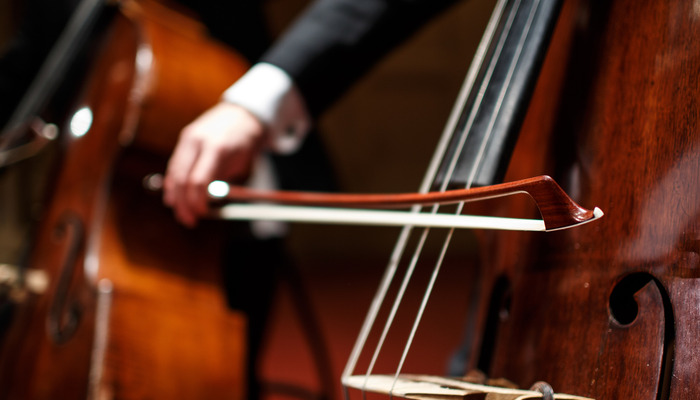
UNIVERSITY ORCHESTRAS SEEK THE RIGHT NOTES
By Mark Kanny,
University Orchestras Seek the Right Notes
PITTSBURGH TRIBUNE-REVIEW
Friday, May 20, 2011
In principle, the basic issues involved in making music are always the same. Play the right notes, in tune and in time with good rhythm. Nearly as fundamental are essential nuances, such as tone, articulation and style. These issues apply to solo and ensemble performance alike.
But, making music with others requires the development of additional skills, especially listening in new ways. That’s why many years of playing in high-school orchestras or bands, youth orchestras and university or conservatory orchestras precede any professional orchestral career.
Conducting an orchestra of students requires a special perspective, as Jeff Turner knows. He was named the director of orchestral studies at Duquesne University’s Mary Pappert School of Music in late April, succeeding Sidney Harth. Turner brings world-class performance standards to his new role because he has been a Pittsburgh Symphony bassist since 1987, and principal since 1992. He’s taught bass at Duquesne since 1988.
“I want to serve the kids really well, so my main approach is still coming at this as an educator,” Turner says. “I want to share everything with them I can about the music. When I study, I’ll do so from the perspective of what a player for the first time would need to know.”
But, then, Turner says he’s always told his bass students, “I don’t practice parts. I learn pieces.”
University orchestras can tackle nearly all the music that professional orchestras do. Next season, Turner is planning to do music by Claude Debussy and Igor Stravinsky. Ronald Zollman, Turner’s counterpart at Carnegie Mellon University, is planning to do Gustav Mahler’s Symphony No. 5, which Manfred Honeck and the Pittsburgh Symphony Orchestra are recording this weekend.
“Most of the time, it doesn’t take great technique to play musically,” Turner says. “Often students want technical solutions to problems, but if you give them, instead, musical solutions, they can find a little enlightenment, as well. For example, I will very rarely tell students they’re rushing or dragging. I say listen to the accompaniment, see where the motor is, and play with that. I share context to help them discover how to listen in ensemble.”
University orchestras have more time for rehearsals than the pros and need it, because they don’t have the experience to be efficient. With that time, rehearsal techniques can be used for which the pros usually don’t have time. For instance, in the fall, Turner plans to increase sectional rehearsals — winds or strings without the rest of the orchestra — to improve cohesion.
“A good student orchestra can play anything, but they can’t play anything under any circumstances. They need the right preparation to expand and fulfill themselves. There is nothing that’s easy to play. I mean nothing,” says Zollman. He conducts professionally, too, and is the new principal guest conductor of the Czech Radio Orchestra in Prague.
Musicians know the music of Wolfgang Amadeus Mozart is very difficult, even though he seems to be simple. Zollman, who conducted five major pieces by Mozart with Carnegie Mellon students this year, explains one of the reasons.
“You hear everything in Mozart. It’s transparent. But nothing is simple in making music,” he says. “Anybody can walk 10 yards straight, if he or she hasn’t had too much wine or whiskey. But it becomes more difficult to walk the same 10 yards on a narrow exercise bar 4 feet off the ground. Because of Mozart’s transparency, there’s no place to hide” and hardly any margin for imprecision.
Turner and Zollman lead orchestras that are different in composition. Carnegie Mellon’s orchestras are filled with performances majors. Duquesne’s orchestra, which has seen its alumni go to top professional orchestras, includes music-education and music-therapy majors as well as pre-performance students.
The University of Pittsburgh Symphony Orchestra is entirely different. Roger Zahab has been its music director since 1992 and has built it from 12 players to full symphonic size — 80 or 90 players nearly all of whom are not music majors. Most are medical students, or looking to careers in scientific research or mathematics.
As a result, Zahab sometimes has to nurture potential members of his orchestra in ways his colleagues at Carnegie Mellon and Duquesne do not.
“I had one medical student who has played a little piano and a little guitar and wanted to play violin in an orchestra. I told her she’d have to play in tune and have good rhythm,” he says. “She was so determined, it took her only a year and a half to acquire the skills. She plays very well in tune, is self-correcting and shifts positions well.”
Zahab put the new violinist in the back of the second violins and told her that when a passage comes she can’t play to just wait until notes come that she knows she can play.
“This year she could play almost everything: ‘The Firebird’ Suite, Mahler’s Fourth Symphony and Beethoven,” says Zahab. “What this means to me is that she’ll be a wonderful doctor — if she survives med school.”
If seeing students grow is the priceless joy of teaching, conducting students adds the joy of hearing them transcend themselves.
“There is common energy in an orchestra,” Zollman says. “People find themselves playing better than when playing by themselves because energy is contagious in a good sense.”